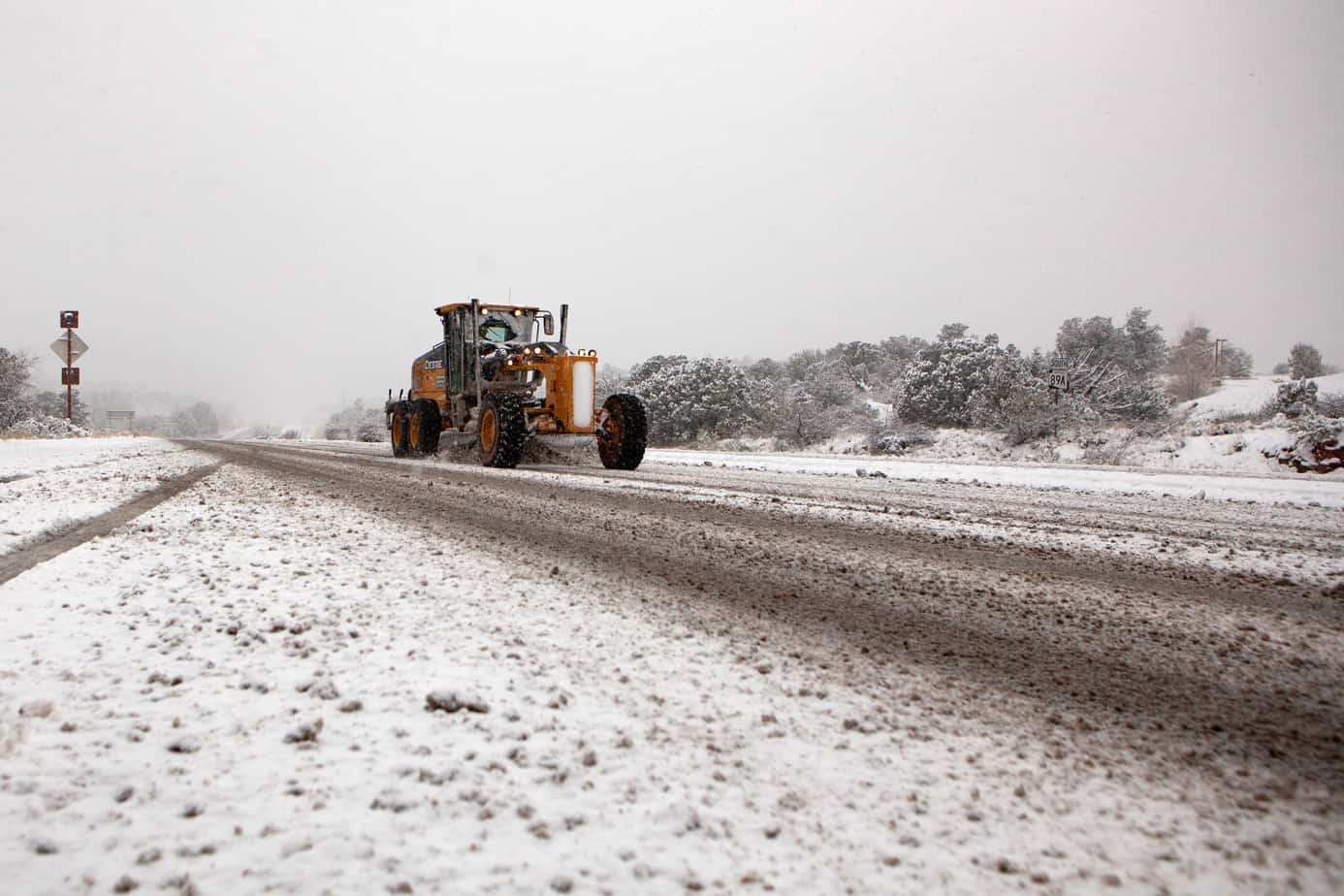There are few topics in life that generate as much conversation — even amongst perfect strangers — as weather.
And last week, people in Arizona had a whole lot to talk about.Not only did areas like Flagstaff see all-time records broken but residents in Tucson and Phoenix reported a sighting almost as rare as Bigfoot or a jackalope — snow.While there were reports of several accidents, downed trees and branches and motorists getting stuck, local officials said things went better than expected.
Sedona City Manager Justin Clifton said that, given the severity of this snow event, the city did very well.
“Preparation started a couple days before the storm and crews worked around the clock for more than four days,” he said.
“I’m especially proud that we found ways to persevere in spite of challenging conditions, long shifts and equipment failures. We’ll organize an after-event debrief and talk about ways to improve communication and response. I would like to find a way to get to more neighborhood streets and sidewalks sooner.”
City Engineer and Public Works Director Andy Dickey said he was very pleased with the city’s response addressing not only the snow but more importantly, the ice on the roadways. Even though the majority of the snow fell on Thursday, Feb. 21, and Friday, Feb. 22, Dickey said snow removal will continue throughout the week. Warmer weather is expected this week, which will help with that effort.
“This took a tremendous effort by our staff working around the clock covering shifts through the night for four days straight, and cleanup is still ongoing,” he said.
“I am proud of the fact that we were able to keep our main routes in and out of Sedona open during this storm, even though there were many segments of highway closed in Northern Arizona.”
Dickey said the response required a lot of resources, including the city’s two snow plows and another truck hauling cinder material, with an estimated 100 tons of cinders placed during this storm. The city also enlisted the assistance of Tiffany Construction during the storm, as their grader and operators worked around the clock Thursday through Saturday. In addition, ADOT made several passes through Sedona during the storm.
“A lot of our success during this storm is a result of things we’ve learned during past storms,” Dickey said.
“Part of this is making our work more efficient by focusing on priorities and improving communication between the public works and police departments. At times, clean-up was interrupted by needs for clearing downed trees and other critical efforts outside our top priority.”
The unusual amount of snowfall in such a short period of time did strain city equipment and resources and necessitate repairs, and, therefore, some streets were not cleared as they had anticipated, Dickey added.
“We appreciate every-one’s understanding and patience as we complete this clean-up process,” he said.
Lt. Lucas Wilcoxson said the Sedona Police Department was well-prepared for the snow storm as they set up an operation center for people to call if they had a question about the weather and roadway conditions. In all, they fielded 58 storm-related calls.
“We had snow chains for the patrol vehicles and we had fully-staffed patrol squads to handle any type of calls for service that came in,” he said.
“We also had extra dispatchers on duty to handle the increased calls for service and we had extra volunteer staff on standby. We were able to handle all the calls for service that come into the police department without any issues.”
According to the National Weather Service, the Verde Valley received anywhere from 3 to 18 inches of snow from Feb. 20 to 22. Included are:
West Sedona: 14 inches
East Sedona: 15 to 18 inches
Jerome: 14 inches
Cottonwood: 13 inches
Clarkdale: 12 inches
Cornville: 9 inches
Rimrock: 5.5 inches
Camp Verde: Between 3 and 5 inches
By comparison, Flagstaff Airport received 40.8 inches of snow. The Arizona Department of Transportation used advanced planning and communication, which included conference calls with other agencies and shifting personnel for extra support.
“This allowed us to stay on top of situations related to the record snow,” ADOT spokesman Ryan Harding said.
“ADOT’s snowplow operators worked around the clock until highways were back to black pavement. Their dedication and hard work was on display throughout the storm, as they rotated in 12-hour shifts.
”By doing this, Harding said they were able to reopen closed highways as soon as it was safe to do so because of the resources the state has, including approximately 90 snowplows on hand for ADOT’s North Central and Northwest districts. Those districts include Sedona, the Verde Valley, Flagstaff, Prescott, Kingman and Payson.
“As a case-in-point on planning and communication, we worked with the National Weather Service and watched conditions on traffic cameras along state highways and discussed how best to stage equipment and personnel while getting critical information to drivers,” Harding said.
Acting Sedona Fire District Chief Jayson Coil said SFD crews began actively preparing several days in advance when the National Weather Service forecast models began anticipating a significant system.






















